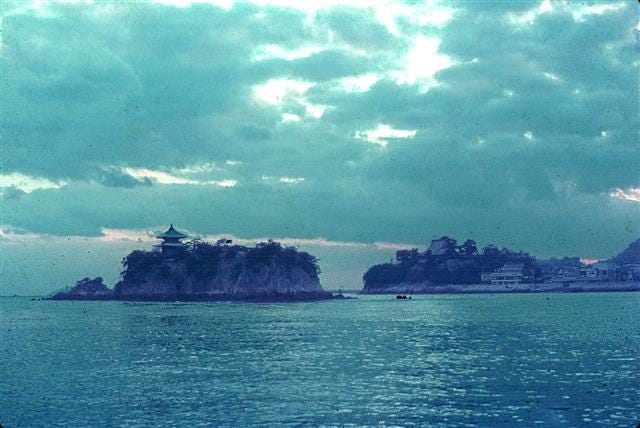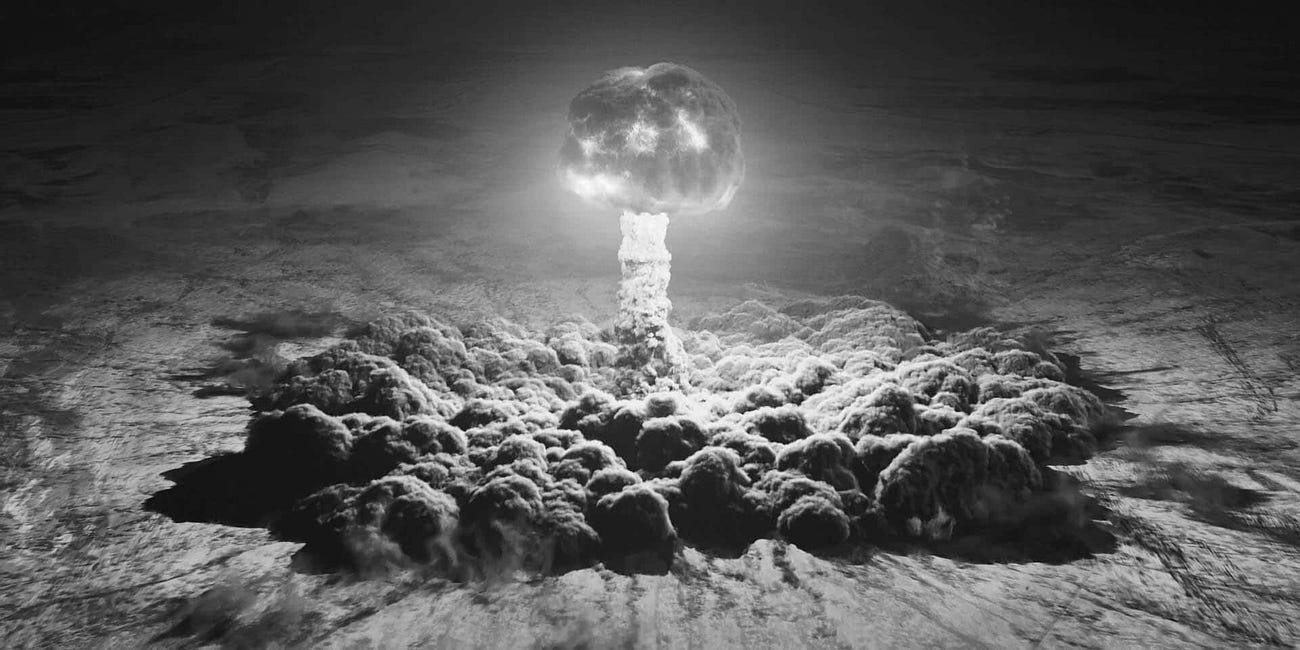Atomic Anniversary
August 6, 1945
August 6, 2025
Six miles above this island in the Inland Sea of Japan, B-29 pilot Paul Tibbets readied the 9,000-pound cargo of his aircraft, the Enola Gay, on August 6, 1945. He had named the plane after his mother. Commanding bombardier Tom Ferebee to open the cargo bay, the crew watched as a nuclear bomb descended toward the unknowing populace of Hiroshima. Tibbets instantly executed a 155-degree banked turn to escape the shock wave from the blast. Forty-three seconds later, at 8:15 am Hiroshima time, from 1,890 feet above Hiroshima the detonation caused a flash and blast of unimaginable intensity, followed by a mushroom cloud 45,000 feet high, in which pieces of buildings were seen. By then, 12 miles away, the crew of the Enola Gay felt several shock waves from the blast. Of the 350,000 residents of Hiroshima that day, 140,000 died from the blast, the more than 3,000-degree Celsius heat, or radiation of the nuclear explosion.
Directed by Robert Oppenheimer, the nuclear physicists of the Manhattan Project had worked feverishly to develop this awesome weapon for the purpose of defeating Nazi Germany in World War II. But, by August 1945, Germany had already surrendered three months earlier. Japan’s surrender was imminent, as Generals MacArthur and Eisenhower knew and advised. All of the atomic scientists who witnessed a test-explosion at Los Alamos were well aware of the mass murder it would inflict on a civic populace. One of them, Hungarian refugee Leo Szilard, questioned the military need for the atomic bomb, since Germany had already surrendered. Szilard may have felt a particular responsibility to try to stop the atomic bombing of Japan because he had persuaded Albert Einstein to join him in a 1939 letter urging FDR to convene a group of physicists to develop bomb-grade nuclear fission. Both Szilard and Einstein had fled Nazi Germany and were motivated by what they thought was the likelihood of that country developing such a weapon first. Einstein's enormous prestige got FDR's attention, as Szilard was well aware it would, and this led to the mobilization of physics talent, government money, and expert coordination that became the Manhattan Project. Einstein later said this letter of his and Szilard's was 'the biggest mistake of his life'. Szilard, regretting his role in persuading Einstein to join him, tried to petition FDR's successor President Truman, to offer Japan a demonstration of the atomic bomb's awful destructive power before actually incinerating a city. But circulation of this petition among the scientists at Los Alamos was blocked.
General Leslie Groves, the military supervisor of the Manhattan Project, Secretary of War Henry Stimson, and Secretary of State James Byrnes nevertheless considered a demonstration of the atomic bomb as a way of persuading Japan to accept unconditional surrender in June 1945. But as Stimson later recalled in a 1947 article, they were dissuaded by A) the possibility that a test-bomb might not explode, and B) the lack of other bombs. 'Nothing would have been more damaging to our effort to obtain surrender', Stimson wrote, 'than a warning or a demonstration followed by a dud — and this was a real possibility. Furthermore, we had no bombs to waste. It was vital that a sufficient effect be quickly obtained with the few we had.' Other objections to a demonstration included the possibility that if a Japanese surrender were not forthcoming, they would try to intercept the incoming bomber, or move American prisoners of war to the designated target.
The Manhattan Project scientists disclaimed responsibility for the consequences of their handiwork: 'With regard to these general aspects of the use of atomic energy, it is clear that we, as scientific men, have no proprietary rights,... no claim to special competence in solving the political, social, and military problems which are presented by the advent of atomic power.' Of the construction of nuclear bombs set to obliterate two cities, Stimson wrote triumphantly to Truman on July 31, 1945: 'What has been done is the greatest achievement of organized science in history.'
The Soviet Union invaded Japan on August 8, 1945, Stalin hoping to capitalize on Japan's certain defeat to seize more territory. The status of the four islands off Hokkaido that were then captured from Japan remains unresolved as of August 2025. Stimson wished to use Hiroshima to deter Stalin from expanding Communist territory any more than he had already done. But one of the scientists, himself a former Communist less reticent than his scientific comrades about political intervention, took it upon himself to even the postwar nuclear balance. This post tells that story:
Oppenheimer
Destroyer of Worlds. The bio-pic 'Oppenheimer' debuted in Paris on July 21, 2023. Its first weekend grossed $82 million, exceeded only by 'Barbie', at $162 million.





In the world we live in, there is lots of talk about "accountability". Taking note of an anniversary is one way of accounting (thanks, P.D.M.). How does one account for a great destructive act of this magnitude? How does a citizen of the bomb-dropping nation stand to account ? Serious questions, poorly phrased.